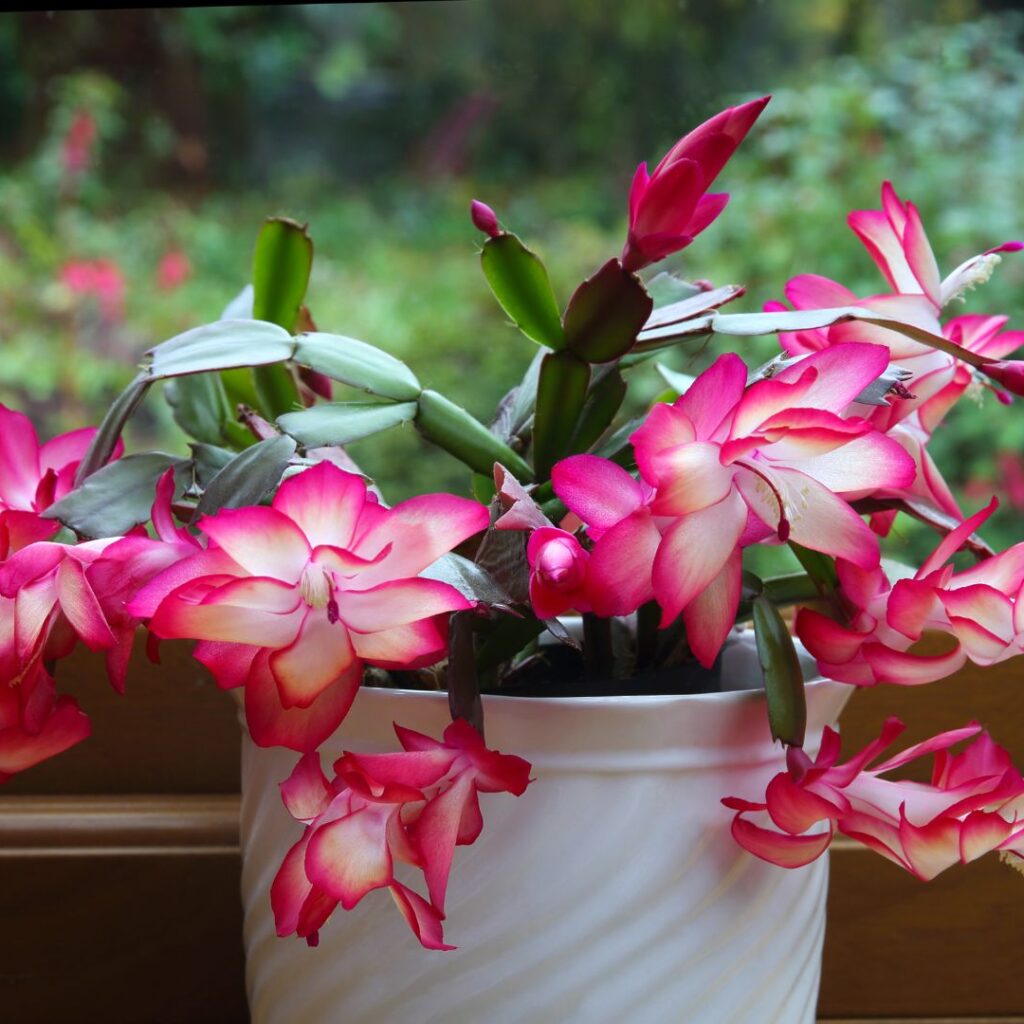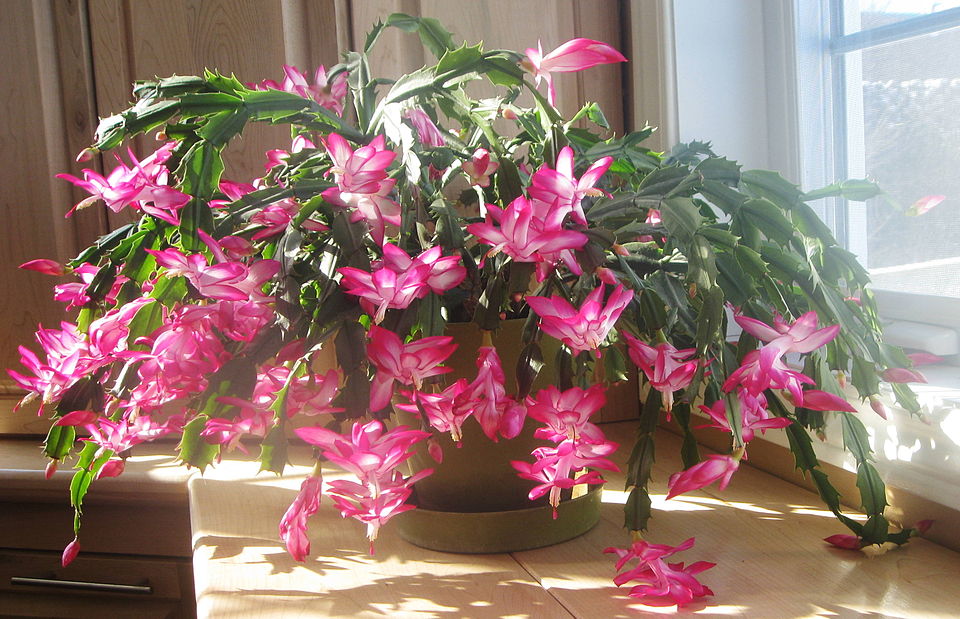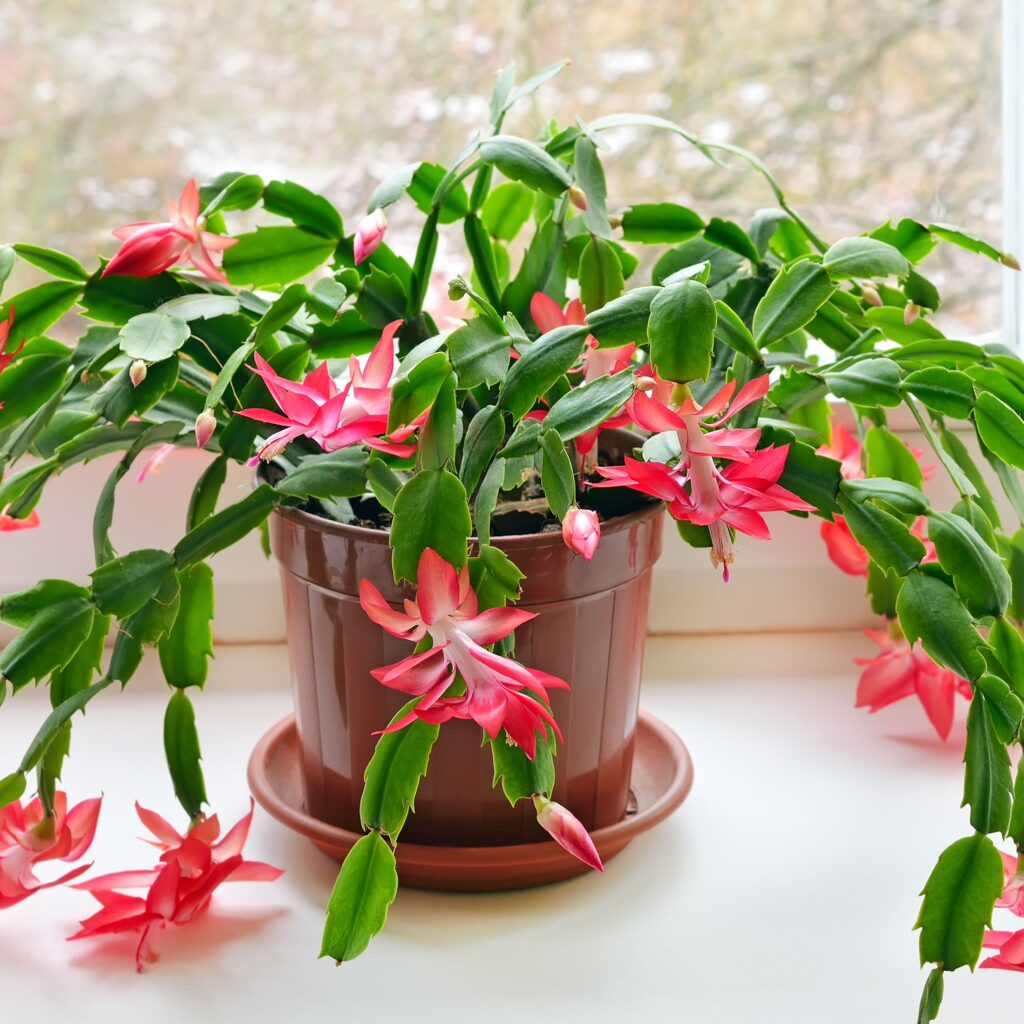The Christmas cactus (Schlumbergera spp.) is a favorite houseplant, especially during the holiday season when it bursts into stunning blooms of pink, red, white, or purple. Native to the cloud forests of Brazil, this tropical cactus thrives in shaded, humid environments — quite different from the arid deserts its name might suggest.
If you’re looking for a beautiful, long-living plant that can brighten your home naturally, a Christmas cactus is an excellent choice. Even better, caring for it doesn’t require synthetic fertilizers or chemical treatments. In this guide, we’ll cover everything you need to know about growing and maintaining a healthy Christmas cactus naturally.

Why Choose a Christmas Cactus?
Before we dive into care tips, let’s appreciate what makes the Christmas cactus so special:
- Seasonal Blooms: It typically flowers around the holidays, adding color and cheer to your winter home.
- Air-Purifying Qualities: Like many houseplants, it helps purify indoor air.
- Low Maintenance: Once you understand its needs, it’s remarkably easy to care for.
- Natural Longevity: With proper, chemical-free care, a Christmas cactus can live for decades — sometimes being passed down through generations.

Best Environment for a Christmas Cactus
Unlike desert cacti, Christmas cacti prefer cooler, more humid environments with indirect light. Here’s how to recreate its natural habitat indoors.
1. Light Requirements
Christmas cacti thrive in bright but indirect sunlight.
- Best placement: Near an east-facing window where it can get gentle morning light.
- Avoid intense afternoon sun, which can scorch its leaves.
- In low-light homes, a spot under grow lights or a few feet from a sunny window will work too.
2. Temperature and Humidity
Since this cactus is native to tropical forests, it prefers moderate temperatures and higher humidity.
- Ideal temperature: 60°F–70°F (15°C–21°C).
- Avoid placing it near heating vents, fireplaces, or drafty windows.
- Increase humidity by placing a tray of water with pebbles under the plant or misting the leaves occasionally with distilled or rainwater.

Choosing the Right Natural Soil Mix
Christmas cacti need well-draining but moisture-retentive soil — different from typical cactus mixes.
Natural Soil Blend
Create a healthy, natural mix at home by combining:
- 1 part organic potting soil (without chemical fertilizers)
- 1 part coarse sand or perlite for drainage
- 1 part coconut coir or peat moss to retain moisture
This combination mimics the loose, organic-rich soil of its native forest floor.

Natural Watering Tips
Overwatering is the most common issue with Christmas cacti. These plants like their soil to be slightly moist, not soggy.
Watering Schedule
- During active growth (spring to early fall): Water when the top inch of soil feels dry.
- During bloom (late fall to winter): Keep the soil lightly moist.
- In dormancy (after flowering): Reduce watering to once every 3–4 weeks.
Natural Watering Method
- Use rainwater, distilled water, or tap water left out overnight to reduce chlorine and fluoride, which can harm the plant.
- Water thoroughly until excess drains out, then empty the saucer after a few minutes.
Natural Fertilization
Skip synthetic fertilizers and opt for natural, organic options to feed your Christmas cactus.
Natural Fertilizer Ideas
- Compost tea: A mild, nutrient-rich liquid made by steeping compost in water.
- Diluted fish emulsion: Use at half-strength once a month during the growing season.
- Banana peel tea: Soak a chopped banana peel in water overnight and water your plant with the nutrient-infused liquid.
Avoid fertilizing in late fall and winter while the plant is blooming or dormant.
How to Encourage Blooming Naturally
One of the joys of owning a Christmas cactus is its spectacular seasonal flowers. Here’s how to coax it to bloom without synthetic chemicals:
Bloom-Boosting Conditions
- Darkness and cooler nights: From mid-October to November, give your cactus 12–14 hours of darkness at night and keep it at 60°F (16°C).
- Limit water during this period to encourage bud formation.
- Once buds appear, return the plant to its usual spot and resume normal care.
Avoid moving or repotting the plant when buds are forming, as this can cause them to drop.
Natural Pruning and Propagation
Pruning your Christmas cactus keeps it healthy and encourages fuller growth.
How to Prune Naturally
- After blooming, gently twist or snip off segments at the joints.
- Remove leggy or overgrown stems to promote bushier growth.
Propagating Christmas Cactus
- Use pruned stem segments with 3–4 jointed sections.
- Allow cuttings to air-dry for 24 hours.
- Plant in a small pot with your natural soil mix.
- Mist occasionally and keep in indirect light until roots develop (about 4–6 weeks).
Repotting Your Christmas Cactus
Christmas cacti prefer to be slightly root-bound, so only repot every 3–4 years.
When to Repot
- When roots begin to emerge from drainage holes.
- After blooming season in late winter or early spring.
Natural Repotting Steps
- Carefully remove the plant from its pot.
- Gently shake off excess soil and trim any dead or rotting roots.
- Place in a slightly larger pot with fresh, natural soil mix.
- Water lightly after a few days.
Common Natural Problems and Solutions
Even with natural care, you might encounter some issues. Here’s how to address them without chemicals:
| Problem | Cause | Natural Solution |
|---|---|---|
| Dropping buds/flowers | Overwatering or sudden moves | Water only when needed, avoid relocating during budding |
| Yellowing leaves | Poor drainage or overwatering | Improve soil mix, ensure proper drainage, reduce watering |
| Wilting | Underwatering or root rot | Adjust watering schedule, repot if roots are rotting |
| Mealybugs or aphids | Pests | Spray with a natural neem oil solution or insecticidal soap |
Benefits of Natural Care for Christmas Cactus
By choosing natural methods for your Christmas cactus, you:
- Promote long-term plant health without chemical dependency.
- Create a safer environment for pets and children.
- Support pollinators and beneficial insects if placed near open windows or outdoors seasonally.
- Enhance indoor air quality with organic, living décor.
Final Thoughts
Caring for a Christmas cactus naturally isn’t difficult — it just requires understanding its tropical origins and mimicking those conditions indoors. With the right balance of indirect sunlight, humidity, natural soil, and gentle watering, your plant can thrive for decades, blooming beautifully each holiday season.
By avoiding synthetic chemicals and choosing natural fertilizers and pest remedies, you not only nurture a healthier plant but also contribute to a more eco-friendly, toxin-free home environment.
FAQs
Q: Can a Christmas cactus survive without fertilizer?
Yes, while it benefits from occasional natural feeding during its growth period, it can survive on well-prepared organic soil alone for long stretches.
Q: How long do Christmas cacti live?
With natural care, a Christmas cactus can live 30 years or more, with some specimens reportedly over 50 years old.
Q: Is a Christmas cactus safe for pets?
Yes — it’s non-toxic to cats and dogs, though ingesting large amounts might cause mild stomach upset.






Leave A Comment